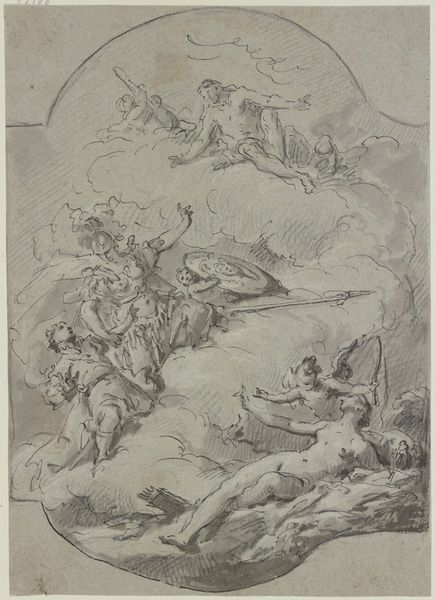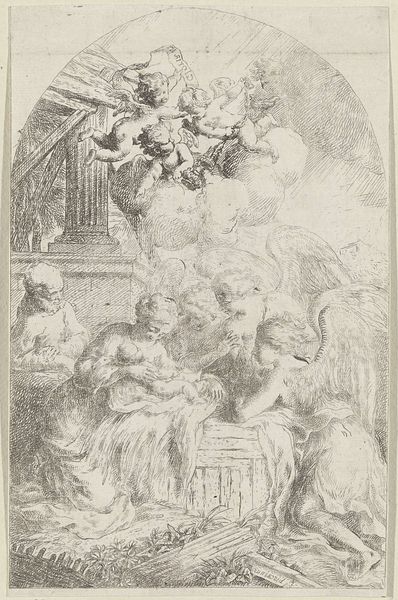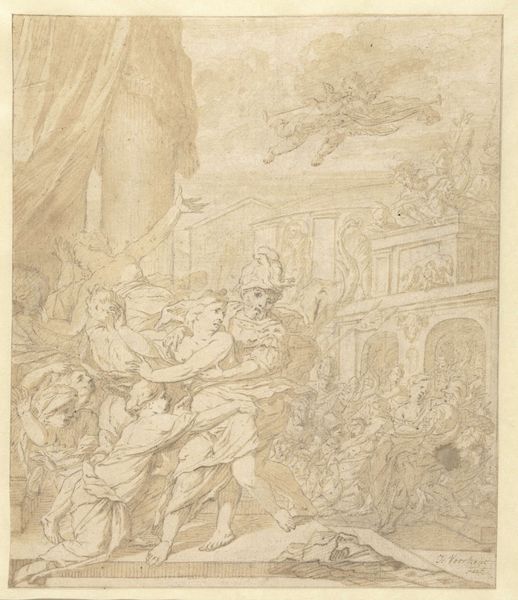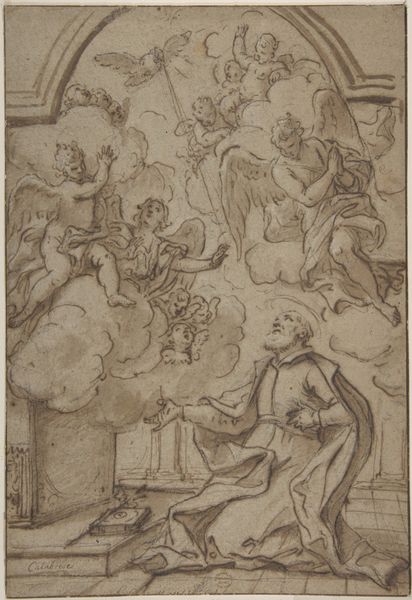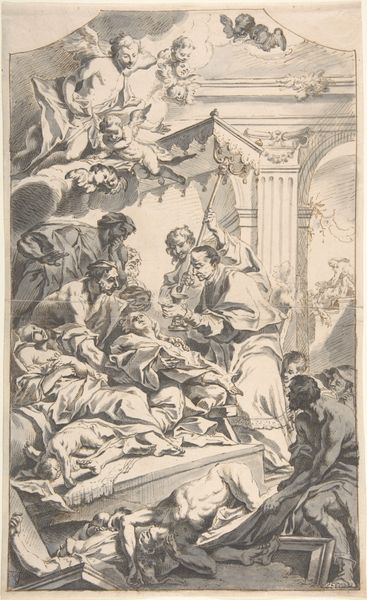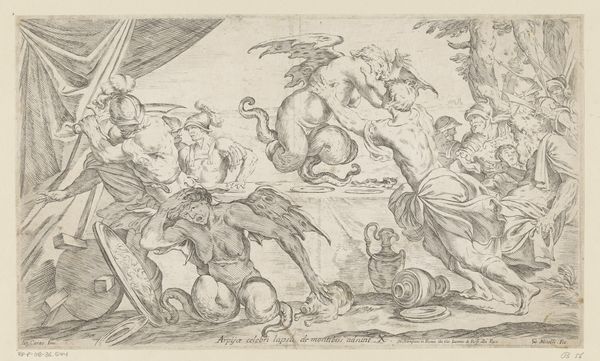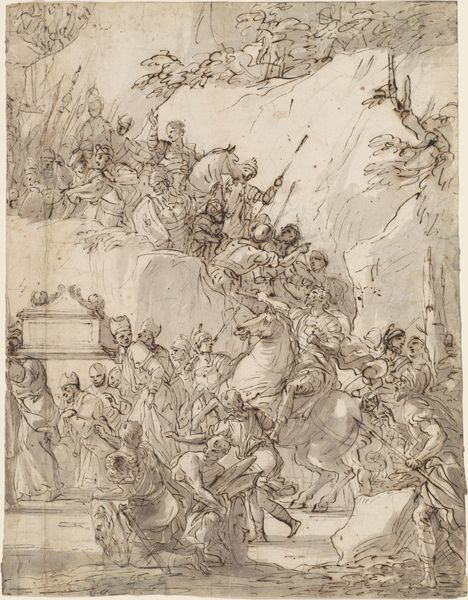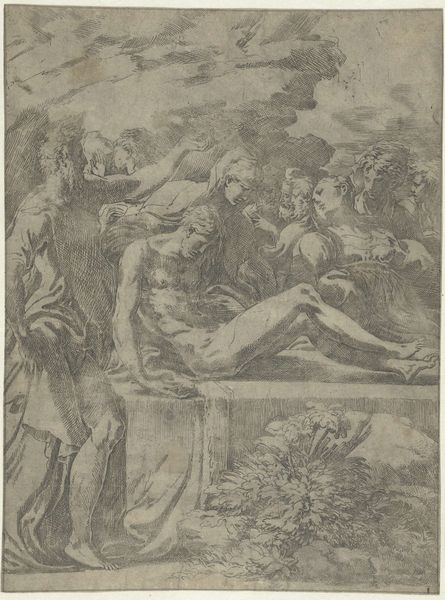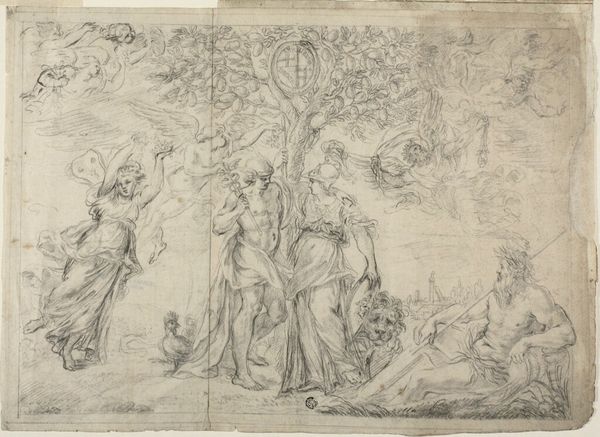
Stigmatization of Santa Maria Maddalena de' Pazzi 1750 - 1760
0:00
0:00
drawing, print, paper, ink, chalk, pen
#
drawing
#
baroque
# print
#
pen sketch
#
figuration
#
paper
#
ink
#
chalk
#
pen
#
history-painting
Dimensions: 273 × 214 mm
Copyright: Public Domain
Curator: This pen, ink, and chalk drawing by Giovanni Domenico Ferretti depicts the "Stigmatization of Santa Maria Maddalena de' Pazzi." Created sometime between 1750 and 1760, it currently resides here at the Art Institute of Chicago. Editor: The first word that comes to mind is ethereal. It’s quite dreamy, with these figures almost floating. It’s primarily gray, very linear, with a distinct lightness despite the weighty subject matter. Curator: The scene captures a moment of intense religious ecstasy, specifically the stigmatization of Saint Maria Maddalena de’ Pazzi. This Carmelite nun was known for her mystical experiences. Editor: The placement of the cross feels really important here. It almost pierces the scene, literally grounded in the earthly while these figures ascend and swirl about, suggesting spiritual rapture and its disconnections from reality. The skull on the bottom is an ominous sign about it, as well as about what she will go through. Curator: Absolutely. And considering Ferretti's role within the Florentine art scene, his rendering serves as a powerful visualization of Counter-Reformation ideals—emphasizing individual piety and the miraculous intervention of the divine. His career advanced significantly thanks to his religious paintings, reflecting his patrons’ demands. Editor: Seeing the way the Saint kneels, so vulnerable yet determined in her faith, reminds us of the complicated position women held within the church and greater society: Revered as holy figures, yet simultaneously oppressed by religious doctrines and institutional structures. The fact she looks up, away from the holy figures, suggests a questioning and doubt, which gives the figure an unusual dimension. Curator: These depictions often served not just as devotional images but also as affirmations of the Church’s authority. The drama and emotional intensity, very much a characteristic of Baroque art, played a crucial role. Editor: Yes, and examining the artwork with these points in mind makes us think about what this meant in the context of the patriarchal, socio-political world. How did gender, devotion, and religious authority converge in shaping views about sanctity, and women in general? Curator: Considering those aspects offers deeper insights into its historical impact and its interpretation today. Editor: Indeed, thank you for highlighting Ferretti's context; it casts light on the intersectional aspects of this work.
Comments
No comments
Be the first to comment and join the conversation on the ultimate creative platform.
